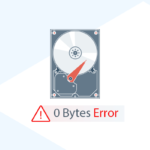What is your go-to strategy in case of an unplanned disaster? What if your IT infrastructure gets destroyed by some hardware, software or network error? Do you have a plan to tackle disasters?
These are some of the most asked questions these days. Business organizations across the world are implementing some or the other kind of disaster recovery solution to protect their costly IT infrastructure, data, and business continuity.
Disasters Aren’t Restricted to Natural Disasters
Did you know human errors account for 52% of all the breach incidents? According to a recent study, power outrages account for only 35% disasters, while hardware failure accounts for a whopping 45%!
A disaster could include almost anything from power cuts to malicious intruders. This makes the need for an intuitive disaster recovery solution even more important. We just can’t deny the impact of data breaches and external security intrusions in halting business continuity.
Disaster Recovery: An Overview
As the name suggests, Disaster Recovery is a type of security planning that empowers a business to recover its disaster-affected IT infrastructure and maintain the business continuity following any kind of disaster.
An ideal disaster recovery plan, which is a set of policies & procedure, should resume normal operations for an affected business organization by regaining access to the hardware, application, and data as quickly as possible.
Disaster recovery solutions involve planning for a variety of possible circumstances that empower business to reduce the overall downtime and helps in retaining customer trust.
Different disaster recovery plans and providers differ on the basis of the type of disasters addressed, response time, cost, and various other factors.
Here are a few important and exigent features that you must look for in your ideal disaster recovery solution.
Minimal Performance Impact
One of the most important features for any modern disaster recovery solution setups is the overall impact it will have on the overall productivity and performance. The replication process must not impact the IT infrastructure to ensure a strong RPO.
Recovery Plan Testing
The most important thing while implementing a DR solution is to make sure it actually works. Moreover, the additions you do in your IT infrastructure and recovery plan must go under an advanced failover test on a regular basis.
Testing is one of the most overlooked areas of disaster recovery solutions. It is absolutely critical for all sizes and kinds of business organizations across the world in modern times. You have to have a plan to execute testing on a regular basis. It is advised to have a test run of the disaster recovery plan at least once in a year.
Geodiversity
Having the backup of your complete business data in a single server farm is not at all advised, nor is enough to keep your data safe from unplanned disasters. Geodiversity is one of the key necessities of an intuitive disaster recovery plan. It ensures complete redundancy and eliminates single points of failure for all different kind of recovery solutions.
Your ideal cloud-based disaster recovery service provider should ensure you geodiversity. It is also very important to verify the location of the primary and backup data environments.
What Kind of DR Solution is the Best for Your Business?
So now that you know what exactly is a Disaster Recovery solution and what are the major things you should look for in an ideal Disaster Recovery plan, here we take a look at the different Disaster Recovery techniques available in the market these days. Your choice here involves the recognition of different mission critical business processes which are critical for your organization.
Following are three major kinds of disaster recovery techniques out there in the market:
1. Synchronous Replication
This technique replicates data and systems both on the secondary site, as well as on the local site. This technique guarantees business continuity for small organizations, as well as for the enterprises. Synchronous replication also guarantees very low RTO and RPOs. It is considered one of the best solutions for minimising downtimes and enhancing availability.
2. Asynchronous Replication
This is the technique with no distance limitations at all. Asynchronous replication allows you to protect your IT infrastructure even in large scale disasters, for example an earthquake or flood. It is much cheaper and feasible for small organizations as well.
3. Mixed Technique
Here we have a blend of both the above mentioned techniques. This mixed approach minimses recovery times and is effective in ensuring highest availability in all kinds and sizes of disasters.
Conclusion
Disaster recovery solutions are an asset for all kinds of organizations. You have to make sure that you choose the perfect disaster recovery solution that caters all your needs and purposes without costing you anything beyond your budget.
Author Bio – Annie
Annie is an expert technical content writer at vDesk.Works, a worldwide leader in Business Management Automation. She writes high-quality Blogs, Press Releases, Articles, Ad Copies, and more for all kinds of IT businesses that want to see their Google rankings to surge.





